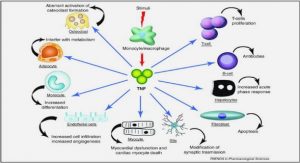Get Complete Project Material File(s) Now! »
Instrumental rationality versus communicative reason
Wells (1995:48) notes that a communicative or discursive form of reasoning directs individuals to question and negotiate issues, to reach mutual understanding concerning social needs, interests and norms. Ulrich (2009:4) observes that communicative rationality implies that there is a rational core in all attempts to achieve mutual understanding. Morrow and Torres (2002:52) add that realisation of normative reason can only be constructed dialogically and not instrumentally. To support this notion, Wells (1994:48) observes that communicative or discursive reasoning directs an individual to critique the status quo and negotiate with others to reach a mutual understanding. It results when members develop intersubjective agreement after probing and challenging publicly presented arguments and evidence. For Scot (2001:6) instrumental action involves the assessment of alternative choices to control the external reality. In this study, the results of the situational analysis indicated that there was lack of knowledge among maternal healthcare users on recommended initial ANC booking, complications in pregnancy and the importance of utilising maternal healthcare services. The CIG members developed a context specific birth preparedness information booklet to complement the existing health education efforts. The booklet was developed after wide consultation with community members, healthcare providers and policy makers. Habermas (1984 cited in Singh, 1999:262) also categorises human approach to knowledge as objective (physical worlds of reality), subjective (mental world of inner experiences) and social (the constructed social world). The objective worldview in maternal healthcare encompasses the scientific and professional knowledge including procedure manuals that assist maternal healthcare providers to provide quality care. The subjective world touches on the personal factors of both the client and the maternal healthcare provider that have a direct impact on maternal outcomes. The factors include personal values, beliefs, attitudes, norms, language, previous experiences with maternal healthcare services and level of education. The constructed social world is the interaction that occurs between the women, their families and maternal healthcare providers. In this study, knowledge was constructed as the CIG members realised that maternal healthcare users need to adhere to recommended WHO guidelines. The CIG members shared and critiqued the indigenous knowledge systems and together, they generated new knowledge which they compiled in a birth preparedness information booklet.
Maternal transfer from clinics to the district and central hospitals
Transfers from the clinics were referred to St. Michaels Mission Hospital and if there were any further complications the patients were referred to Harare Central hospital where better specialised services were available. Transfers from the clinics to St Michaels’ Mission district hospital were 13. The district maternal transfers out were followed up to Harare Central Hospital to find out the outcome. Out of the 35 transfers that were recorded to have been transferred to Harare Central Hospital, only 5 were traced in the Central Hospital registers. The probable reasons for having no records of the other patients could be that, the patients used different names to escape payment of maternity services since maternity care is not free at the central hospitals or they may have sought treatment elsewhere. Harare Central hospital records showed that 39 patients were transferred for further management from the district to Harare Central hospital. The three major reasons for transfer in the district were slow progress of labour, 7 (15.2%), previous caesarean section, 7 (15.2%) and foetal distress, 6 (13.0%). Some patients who were transferred had more than one problem. Of the 39 patients who were transferred from the district, 3 (7.7%) died at the central hospital and of those who died, two had live births and one died in utero and was delivered during post mortem. Further analysis of the transfers showed that 3 (7.7%) had stillbirths, 11 (28.2%) had a normal vertex delivery, 25 (64.1%) were delivered through caesarean section and 2 (5.1%) women were treated and discharged. Reasons for patient transfer out are indicated in Table 3.1.
CHAPTER 1: OVERVIEW OF THE STUDY
1.1 Introduction
1.2 Background
1.3 Rationale
1.4 Problem Statement
1.5 Context
1.6 Significance of the Study
1.7 Research questions
1.8 Aim and objectives
1.9 Concepts clarification
1.10 Delineation
1.11 Research design and methodology
1.12 Rigour
1.13 Ethical Considerations
1.14 Organisation of the Chapters
1.15 Conclusions
CHAPTER 2: PHILOSOPHICAL FOUNDATION AND METHODOLOGY
2.1 Introduction
2.2 Research paradigm: critical theory
2.3 Research design
2.4 Research method
2.5 Rigour
2.6 Ethical considerations
2.7 Conclusion
CHAPTER 3: FINDINGS OF CYCLE 1 AND LITERATURE CONTROL
3.1 Introduction
3.2 Description of health facilities
3.3 Description of antenatal care (ANC) utilisation
3.4 Description of intrapartum care utilisation
3.5 Description of postnatal care utilisation
3.6 Maternal transfer from clinics to the district and central hospitals
3.7 Maternal mortality rates
3.8 Maternity drug availability
3.9 Factors related to utilisation of maternal healthcare services
3.10 Barriers to use of available resources and maternal healthcare services
3.11 Enablers to Use of available resources and maternal healthcare services
3.12 Beliefs, practices and taboos
3.13. Conclusion
CHAPTER 4: CYCLE 2 DEVELOPMENT AND IMPLEMENTATION OF THE INITIATIVES
4.1 Introduction
4.2 Recruitment of CIG members
4.3 Demographic characteristics of CIG members
4.4 CIG Processes – Cycle 2
4.5 Observe and reflect (evaluating)
4.6 Comparison with findings from other research
4.7 Conclusion
CHAPTER 5: FINDINGS OF CYCLE 3 AND LITERATURE CONTROL
5.1 Introduction
5.2 Findings: Section A: Comparison of maternal morbidity and mortality and maternal healthcare services utilisation statistics
5.3 Comparison of maternal healthcare utilisation during intrapartum period
5.4 Comparison of postnatal care utilisation
5.5 Comparison of maternal transfer from clinics to the district and central hospital
5.6 Comparison of maternal mortality rates
5.7 Comparison of maternity drug availability
5.8 Comparison of available resources
5.9 Findings: Section B: Comparison of utilisation of maternal healthcare services according to
stakeholders
5.10 Barriers to utilisation of available resources and maternal healthcare services
5.11 Enablers to utilisation of available resources and maternal healthcare services
5.12 Beliefs, practices and taboos
5.13: Findings: Section C: CIG members’ reflections
5.14 Conclusion
CHAPTER 6: CONCLUSION, LIMITATIONS, STRENGTHS AND RECOMMENDATIONS
6.1 Introduction
6.2 Research Methodology
6.3 Conclusions
6.4 Limitations and strengths of the study
6.5 Recommendations
6.6 Contribution to existing midwifery knowledge
6.7 Dissemination of Results
6.8 Conclusion






